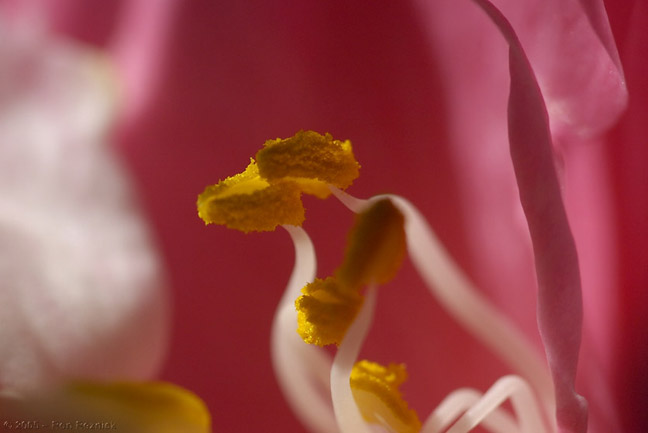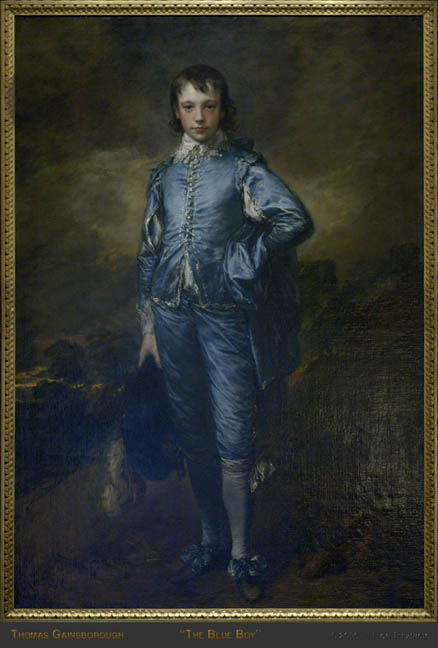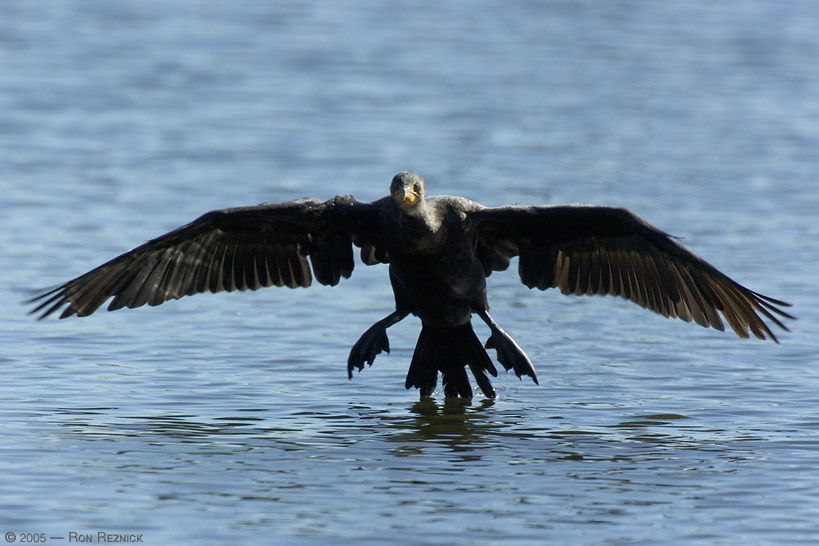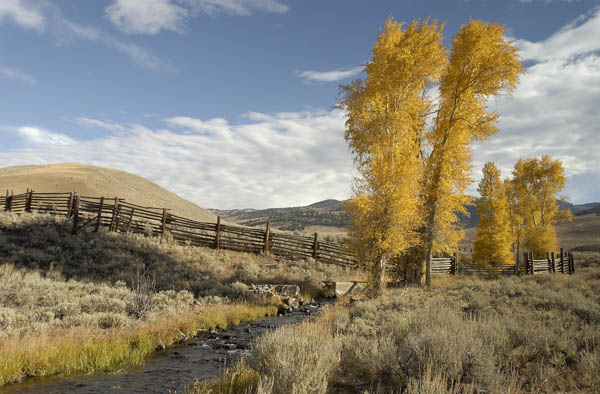



 |
 |
 |
 |
We are trying to develop a community where photographers can come and discuss nature, wildlife and pet photography related matters. We encourage you to enter the forums to share, make comments or ask questions about this interview or any other content of NWP.
This article is Copyright 2005, James Morrissey, and may not, in part or in whole, be reproduced in any electronic or printed medium without prior permission from the author. The images in this article are the property of Ron Reznick and have been licensed to James Morrissey and the NWP Photo Forum for the purpose of this interview.
Editor's Note: A link is at the end of the page if you wish to learn more about Ron Reznick and his work.
Part I: About Ron Reznick
 |
Camellia (c) Ron Reznick
JM: Hi Ron, thank you in advance for being willing to do this interview.
RR: No problem. I had this time available and I have slated it for you.
JM: Let's start with what life was like growing up. What was your family like?
RR: My dad was a CPA. Do you know anything about accountants?
JM: I have a very good one who did 3 tours in Vietnam. He's pretty good and has a grudge.
RR: [laughs] An accountant is a sedentary, office laden individual who tends to work more often then anything else. Now, some of us are workaholics - me for one. However, my dad spent a lot of time in the office, so we did not see him very much - if at all. I had to find things to do for myself a lot. As a kid, I did kid-like things (you know, kids do that). I wandered from here to there and everywhere until I found something that interested me. At fourteen, I started doing gymnastics. I did it for over 10 years at the elite level.
JM: Do you mean professional?
RR: At that time there was no such thing as professional gymnastics. You know, I am an old fart. I am 50.
JM: Do you have siblings?
RR: I have one full brother and two half brothers. Different mothers, same father. My mother is in Panguitch, Utah. She is an interesting individual. Essentially, my father and mother got divorced when I was fairly young. My grandparents did not like her. As a result, I saw my mother very rarely. I got closer to her after I was a fully evolved adult. In short, I did not have much parental guidance when I was young.
The time between 14 and college, was focused mainly on gymnastics. I was obsessed. I AM an obsessed geek anyway. :) I progressed to the point where I was competing at the elite level, and was an All American 5 times (top 6 in the country). I spent some time early in my college career (just after recovering from a broken back) training in Japan, and that assisted me to reach the level I aspired to. At the time I left college, there were still no real sponsors, so I had to quit due to the cost of training. I was hurt my last year of competition (torn ligaments in my left ankle) and had to compete the entire year taped up. After I finished that year, I did coach for a while, but when considering the future I decided that staying in gymnastics (coaching) was just not going to be satisfying enough for me.
I wandered around trying to figure out what I wanted to do. I had an interest in audio - as many kids do - and went to work at a stereo company to learn the sales end. I then worked for another company that distributed factory second loudspeakers so that I could learn the other end. With these experiences, I started making products out of spare parts at the store that I began to sell. Many people started coming to me - musicians and the like -for my products.
In 1979, I went out on my own. I used the funds I had earned to build a laboratory. I went to the UCLA engineering library and basically read everything that was available at the time. I then did my own research and decided to take on some of the other loudspeaker manufacturers. It took me a year to develop a 5" 2-way based on KEF parts that achieved what I wanted, then set up a double-blind test to show some musicians that I was able to beat the best on the market. For well over 20 years, I developed high technology loud speakers as well as doing acoustical engineering - designing rooms, acoustical correction devices, etc.
When I was ready to widely market some designs, I took a position as chief engineer and director of research and development for a technology company. A problem developed after a while (you don't want to know), so I went back on my own and focused on professional products (near-field monitors, etc.). Over time, I began to grow bored of audio and I started designing computers, while still working in the audio field. When I get bored, I start doing something else - as many geeks do. When it got to the point that I was beginning to design a lot of things, I was having trouble finding product photographers who could produce what I needed. So, I purchased a Pentax and started doing my own product photography in the 1980s.
I was interested in digital products and in November 1998 I made the jump, purchasing a Nikon 900s. I used that for about 4 months and hit the wall that limited what the camera could do. I sold it to a friend and purchased a Nikon 950. I hit the wall with that in about 9 months. This is when I purchased the Nikon D1. I decided that I was interested enough to make the investment. The D1 was about $5,000 at the time - without lenses.
I decided that I had just spent a wad and that I was going to learn how do this right. I went out nearly every day and shot 115,000+ images within the first year. The D1 was sent in at the end of the year for its service and they sent me a new one. Then, the D1x came out - and I purchased that. I shot with the D1x for about 5 months and jumped to the D1h because I felt that the image quality was better (the color aliasing problem, among other things).
JM: Why did you feel the image quality of the D1h was better than the D1x?
RR: Any time I photographed a rose or a firewheel (or anything with primary red or blue), the aliasing effects would cause problems. The D1h was the better camera due to its high ISO and color characteristics, and it had better edge definition as well, which was the most notable advantage. I then jumped to the D2h. This is where the business shift to emphasize photography came in. I had nearly entirely shifted away from audio. I have done a few little things, but really have done primarily computers and photography over the last two years.
This last year and a half, between 60 and 70 percent of my income has come from photography.
JM: I am hoping that you could talk more about your family.
RR: Basically it was my father, brother and I for much of the time. I had the evil Cinderella step mother until I was about 10. My father then married a really nice lady, Peg. I then had more of a real family unit. But that was only until HS. By that time I was spending much of the time in the gym.
I have been married to Tomoko for 15 years, and we live with three cats. I also have two children. I was just visiting my mother in Panguich and one of my 1/2 brothers. My actual brother was there for the first day. This was the first time I have spent with more than one of my brothers in years. My mom lived in Mammoth Mountain, and likes to ski a lot. She is 73 years old and skis 60-80 days per year. She moved to Panguitch to be closer to Brett (her son).
JM: If you are doing so much out in the community (seminars, etc), how do you balance your family life?
RR: Well, let us put it this way. When I can, I take my wife with me. When I canít, for example, when I am gone for 1 to 3 weeks and return for 3 or 4 days, I need to take care of all the junk that has piled up, spend time with my wife and go to the next place. Otherwise, I am based here doing work in anywhere from two or four different fields locally, and spending time with my wife from 7 PM until we crash. It is just making use of time as it presents itself.
JM: You have had several different experiences getting to where you are today. If you were to do this again, photographically, do you feel you could do it not having had the background you have currently?
RR: All of your previous experiences contribute to who you are and how you think and what you focus on. No, it would be different if I did not have the experiences I have now. Frankly, some of the mistakes I have made have altered how I see things too. I have probably made 75% of all possible mistakes. I would not want to do it without having made those mistakes. It gives you a database of things not to do.
JM: Who were your photographic influences (I know you said you were self taught)?
RR: When you are training yourself in any field, the most intelligent thing to do is read any little thing you can get your hands on and to examine what other people that you respect do.
This is going to sound weird. But, much of my graphical study has been with painters. Going to museums to study what the masters did. I studied the painters for style. You learn composition, perspective, etc. I have looked at the work of a large number of painters and sculptors: Raphael, Michelangelo, Leonardo da Vinci, Rembrandt, Rubens, etc., and have learned a great number of things from them. I've also looked at the work of a large number of photographers in books and on the internet, as well as having done a lot of experimentation on my own. I suppose that my continuously-evolving styles are based on the work I've seen as well as my own experimentation.
 |
The Blue Boy (c) Thomas Gainsborough (from the Huntington Gallery)
JM: So where does nature/wildlife come from?
RR: I love nature! I started shooting critters because I ran out of things that interested me as subjects at that time. When I got the D1, I was looking for things to challenge me. Anyhow, one of the things that really interested me - wait a second. Have you ever shot flying birds?
JM: Not as much as I would like. I find it VERY difficult.
RR: That is because it is quite challenging. If you can shoot wild birds, you can do a lot of things. Anyway - have you ever heard of a guy named Einstein? You know, that guy with perpetual bad hair days? He was trying to develop a set of equations that can be used to apply to any problem. They would essentially explain how the universe works in one simple set of equations. In order to do this, you need to interrelate all aspects of existence. In short, information that one gains to understand Subject A can be at least partially used to help explain things in Subject B. What one learns in one area can often be applied to another. Let us use the example of portrait technique. You can use portrait techniques - angle of view, use of lighting, composition, etc. to flowers, critters, humans. It is all basically the same with slight modifications based upon your subjects.
 |
Cormorant Landing (c) Ron Reznick
JM: We talked about your inspirations earlier, but we haven't talked about what is motivating you behind that?
RR: Just like anything else, I try to get into the spirit of the subject. To show your subject on more than a superficial level. Let us say we are talking about a specific critter. Many folks tend to just take a documentary shot, of course you are going to do that to get a shot. However, once you have that shot documenting the presence of the animal (or at least making sure you have at least one good shot), you want to try to get one that anthropomorphizes the subject or shows the natural behavior of the species.
JM: What are you trying to relate in your work?
RR: Oh...I think that it depends on the subject. I am trying to express what I am feeling about what I see or what the scene says to me. I also still take documentary shots - don't we all? Really, it is about capturing what something means to you. For example, a monkey coming down to the river to take a drink. You can shoot a documentary picture of the monkey taking a drink, or you can take a cool artistic photograph of the reflections, or a variety of other options. You have a CHOICE about what you take.
JM: Do you believe that the choices we make in our photographic selection says something about what the photographer is thinking/feeling in the moment at a transcendental level?
RR: This is a TRICKY QUESTION.
JM: [laughs] I know, I am sorry.
RR: That is OK. Tricky questions are good questions. They always provoke thought. What we have here is... I have to think of a way of tackling this. You have the choice to take an 'I was there shot' a documentary shot. You also have the choice to try to take an art shot. Creating art can be something like displaying the scene as a whole or trying to get into your subject's head and try to portray what the subject was thinking/doing OR you can create another vision, something similar to some other scene you have seen in life.
JM: What I am saying is 'if you ask any sample of people to look at a Rorshark test, you will get any variety of answers. What I am trying to ask is what YOU are looking for.
RR: It is very difficult for me to define all work in a single explanation. When you compose, the composition is going to be different because of both the subject's response and what you are trying to portray. When you do a product shot for advertising, you must tell the story that the buyer wants to sell. Do you remember the subliminal advertising that occurred in the 50s?
JM: A little before my time.
RR: I am going to give you a quick overview on composition and you will see where this is going. Taking us back to the late 1400s, remember we were talking about how if you wanted to eat that you needed to do work for the church? The church developed a set of standards so that the people who were doing work for the church in Italy or France would tell the same story in a similar fashion. People did not read back then. Stories were told visually or orally.
When one studies religious art from about 1100 to about 1400, one often sees that many of the artisans had no clue about perspective. They also composed in several different ways that had little consistency, which was something the church wanted to establish -- they wanted a pilgrim who was going from France to Italy to see the same story. So, they tried to develop some standards. They decided that subjects, lines carrying the eye, perspective lines, etc. should avoid the corners and the center, and this is how they developed the 'rule of thirds.' This was 550 years ago. It was developed for painted art.
For about 150 years, except for the really well established guys, that was the way to sell your work. You had to follow this type of theme. Now, a lot of the changes that have been made since then were by people who would pay lip service to that rule of thirds while still being creative.
One example would be artists in the Flemish school (such as Rembrandt) who created central vignettes by carrying the eye in from an upper rule-of-thirds point with the light diagonally through an image to a lower rule-of-thirds point using the shadow, but placed the image in the center. As an aside, he generally worked with very dark scenes, so the shadows were quite dark and therefore subtle changes were the rule rather than radical shadows. Some portrait photographers (for instance, Jim Doyle) make strong use of similar techniques in their work.
All of these things were experiments that were successful because people became tired of seeing the same things. Anyhow, the bottom line, over the next 200 years, people were doing different types of experimentation while trying to get around that limitation (while paying lip service to it).
Now, I am going to send you an image that I feel helps make all of this clear:
 |
Aspens in Lamar Valley (c) Ron Reznick
This image makes use of a number of techniques that were developed over the years, with special attention to information developed during two studies by Madison Avenue Ad agencies. It uses nearly every trick in the book to help carry the eye through the image. The shooting position was selected to allow a visual angle that let me set cloud lines leading from each upper corner, so that either Western or Eastern viewers would immediately be led in the directions I wanted them to look. The principle is this: unless the viewer tends to see scenes as a 'gestalt', they tend to view page layouts, ads, images, etc. the way they learned how to read. This means that a person who learned in a Western culture would generally start at the upper left and move either in a "Z" pattern (from the top left directly to the top right, diagonally from upper right to lower left, then directly right to the bottom corner) or in a figure "2" (from the upper left to the right center, diagonally to the lower left corner, then directly to the lower right corner). Eastern culture viewers move in a reverse "Z" or reverse "2", or in a backwards "N" depending on their cultural background.
Notice how, starting from the upper left, that the cloud line leads you to the primary subject (aspens) and through to the upper right corner using the other cloud line, then back past the aspens to the left center, where the line of the hill and fence carry you back to the aspens. The river line carries you out the lower left. Carrying the eye through a scene is one of the important compositional methods, for standard scenics and advertising as well as a number of other genres.
JM: When you talk about the masters producing their own unique rules that pay only lip service to the rules of conventions (such as the rule of 1/3s). Do you feel that you are doing this in your own work?
RR: I use whichever compositional methods apply best to the subject. Sometimes I may combine several techniques - or avoid the accepted methods - to yield the results I consider right for the subject based on how I would like to present it. I look on all of these techniques as guidelines.
JM: I am going to piggy back on an earlier question that I had. Do you feel that your work displays a larger message, i.e. something you are trying to impart?
RR: What you and I see in a scene is going to be different depending on what the scene is. If you are looking at a scenic or a subject (or a subject within that scene) you will see entirely different things. The subject may be part of the scene but NOT the scene.
If I am shooting wildlife. Let us say you are doing this in early Sept/October in Yellowstone. You are shooting the mating scenes of elk. You can just portray what he is doing when he is bugling. You can shoot a behavioral analysis and place the female in the frame for a reference. You can do any one of numerous things.
Let us pick a male elk. You decided to take a picture of a male elk you were going to put in a children's book. Your subject of the elk and the children must interrelate some how. A documentary shot of the elk in all his glory may not speak to the children. You need to think about how the target audience will see that image before you compose it. For kids, cute is important. You need to make the shots talk to the children. You cannot give an elk stage-direction. You need to figure out some way to get it to talk to the children. The only way you can do this is by realizing that you need to find some way of striking the child and make him feel something for the elk.
If you shoot an elk chewing grass, at the exact moment that the jaws line up and the mouth is open, he looks like he is smiling at you. What I would do in this scene is shoot the happy elk. Of course, you still compose it in a way that makes sense for the subject within the scene, but the real target is the timing to make the kids say 'look at the happy elk.' You are telling a story and the story that you tell will change based upon the audience and the subject.
JM: Some might see your love of technology (i.e. your work in computers, audio, etc) as being very different from your current calling. How do you see the fields as being related?
RR: There is art in everything, James. Still, the technical aspects of photography exercise the technically-oriented parts of my pea-brain, and of course the artistic aspects allow me to express what little art exists in my psyche :^) Being a geek, I really do enjoy the technically-challenging aspects of this art.
RR: You are going to hear a weird noise right now. It is the sound of my grinder preparing Kona coffee beans to make an espresso.
JM: I hope that you don't need a few no doze to get through this conversation.
RR: Not at all. If I had a working matter transmitter, I would send you some. :^)
If you would like to see more of Ron's work, please feel free to check out his website at: http://www.digital-images.net/.
As always, we encourage you to come join the community and to be participants in the forums! If you have not registered yet, please
 |
 |
 |